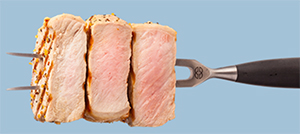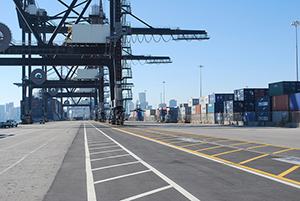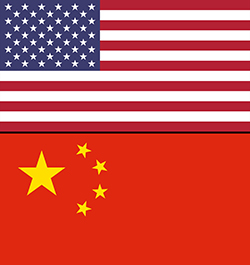Although the Year of the Pig is not until 2019 according to the Chinese lunar calendar, 2018 is the year that the Beijing government slapped an additional tariff of 25% on frozen pork from the USA. It was part of higher import duties levied on 128 American products that went into effect on April 2 in response President Donald J. Trump’s announced 25% tariffs on steel and a 10% hike on aluminum imports from China and other countries.
 China’s Commerce Ministry said that it intends to “suspend tariff concessions” on 120 US food products, including dried fruits and nuts, valued at $2.75 billion in annul trade. The announcement came after it was estimated that up to $60 billion worth of Chinese exports to the United States could be subjected to tariff increases.
China’s Commerce Ministry said that it intends to “suspend tariff concessions” on 120 US food products, including dried fruits and nuts, valued at $2.75 billion in annul trade. The announcement came after it was estimated that up to $60 billion worth of Chinese exports to the United States could be subjected to tariff increases.
China is the third largest importer of US pork, buying approximately $1.1 billion worth last year. Another major US agricultural export to the PRC, soybeans, is not affected initially. It was suggest that Beijing was refraining from escalating the current dispute into a major trade war with Washington – or it could simply underline the fact that
Chinese pork and poultry industries are heavily reliant on US soybeans for animal feed.
However just before this story was filed on the afternoon of April 4, word came that the PRC would indeed add soybeans to the list, though the date that the new tariff would take effect was not announced.
The United States is the second-largest soybean supplier to China, after Brazil. After the announcement from Beijing, US soybean futures prices declined by more than five percent.
“The amount subject to tariff is not big, which shows China is willing to ease the intensity of the trade conflict that was started by the US. Trump gave us a heavy shot, and China is giving a light shot back,” stated Shi Yinhong, director of Renmin University’s US Research Center in Beijing, prior to the soybean announcement.
No Shortage of Pork Buyers
The United States is the world’s largest pork exporter, and is expected to dominate the global pork market over the next 10 years, according to the US Meat Export Federation (USMEF).
 “We regret the Chinese government’s decision to impose an additional 25% duty on imports of US pork and pork variety meat,” said Dan Halstrom, chief executive officer of the USMEF. “The United States is a reliable supplier of pork products to China, and this decision will have an immediate impact on US producers and exporters, as well as our customers in China. We are hopeful that the additional duties can be rescinded quickly, so that US pork can again compete on a level playing field with pork from other exporting countries.”
“We regret the Chinese government’s decision to impose an additional 25% duty on imports of US pork and pork variety meat,” said Dan Halstrom, chief executive officer of the USMEF. “The United States is a reliable supplier of pork products to China, and this decision will have an immediate impact on US producers and exporters, as well as our customers in China. We are hopeful that the additional duties can be rescinded quickly, so that US pork can again compete on a level playing field with pork from other exporting countries.”
Interestingly, the biggest pork producer on the planet, Smithfield, Virginia-headquartered Smithfield Foods, was acquired by China’s WH Group in 2013 for approximately $5 billion.
“There’s no doubt that the new tariff regime will be a headache for WH Group,” commented Loren Puette, director at ChinaAg, an agricultural research firm.
Exports have been a key driver of growth in the US pork industry, and with nearly 27% of American pork production exported last year, international trade is critical to the industry’s continued success and profitability. The PRC is a leading destination for American pork and especially for pork variety meat. In 2017, the United States exported 495,637 metric tons of pork and pork variety meat to the China/Hong Kong market, valued at $1.08 billion – the second-largest international market by volume and third-largest by value.
For pork variety meat exports only, China was the largest destination in both volume (321,116 metric tongs) and value ($741.8 million), accounting for 63% of US export value. Variety meat exports make a critical contribution to industry profitability, and last year these exports to China/Hong Kong alone equated to more than $6.00 per U.S. hog slaughtered.
The past 15 years of record-breaking pork exports from the United States have supported growth in the industry, and this trend is expected to continue through the next decade. Tremendous efficiency gains, resulting in a 55% increase in pork production per breeding hog since 2002, helped position the US industry as the leading global supplier.
Other major exporters of pork products are the EU-27 bloc, Brazil and Canada. Ranking among the leading importers of pork are Japan, Russia, Mexico and South Korea.





